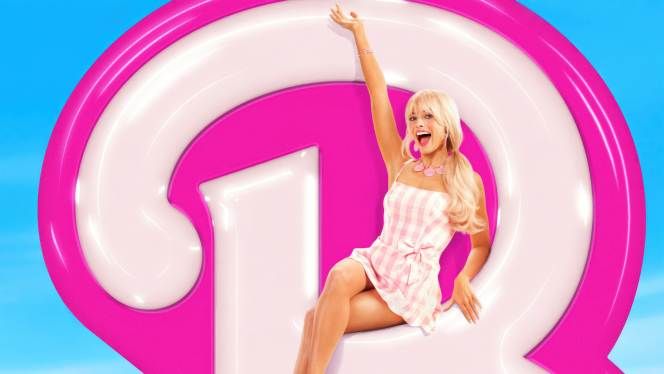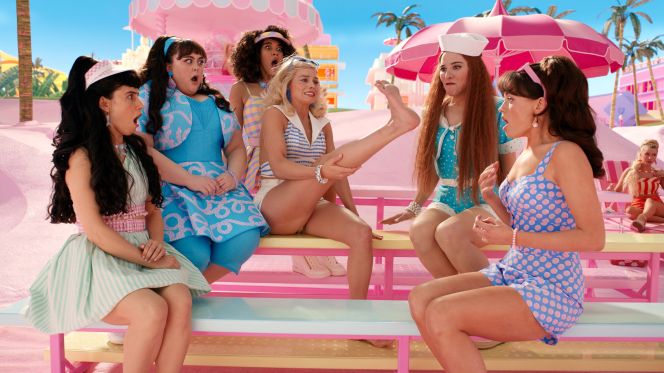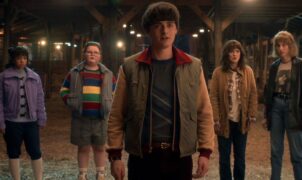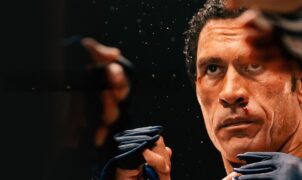MOVIE REVIEW – Barbie is more than just a toy, she’s a true icon – for decades she has been shaping the female ideal, while not exempt from stereotyping and spreading body image issues. Greta Gerwig’s film woven around these concepts creates a bold, satirical, and feminist narrative from Barbie and Ken’s real-life adventures. But does it truly delve behind the pink mask, or is it just another commercial for Mattel?
Many have wished to immortalize Barbie’s story on the silver screen, with Amy Schumer and Anne Hathaway (as Barbie) both being considered for the directorial and lead roles. Ultimately, it was Greta Gerwig who wore the crown, who with her works Lady Bird and Little Women has already proven her ability to depict the lives and struggles of young women in sensitive, humorous images. The lead roles in the Barbie film were awarded to the excellent Margot Robbie and Ryan Gosling. But is the rest of the film of a high enough standard for us adults, who no longer, or never have, “played” with Barbie?
A 1950s American Success Story
Barbie was born in 1959, the work of Ruth Handler, who was one of the founders of the Mattel toy company, which has grown into an empire. According to the story, Handler noticed that her daughter, Barbara, was imagining adult lives for her paper dolls, rather than treating them as babies to be cared for. The doll she invented, named after her daughter, was a vision of the future (though with anatomically impossible proportions). The first Barbie may have been a pretty model in a swimsuit, but later versions were cooks, pediatricians, beekeepers, flight attendants, soccer players, astronauts, and yes, presidents. Barbie’s latest role is perhaps the most challenging for the popular doll: she plays the lead on the big screen, embodied by Margot Robbie, the producer and star, who finds herself in the midst of a surreal existential crisis. The film’s director, Greta Gerwig, is prone to talking about her film in spiritual terms, referring to the Apostles’ Creed and the myth of creation. In this sense, Handler is the closest figure to God in the ultra-pink realm of Barbie Land.
There is another side to Barbie’s origin story, however, according to which Handler encountered a doll named Bild Lilli in Europe, copied it, and then settled with the German company responsible for the toy after they sued her. Barbie may be a pop culture icon and an emblem of the associated impulses of female liberation, but above all her story is about money, and it is impossible to separate her significance for women from the business concept. It seems fair that Gerwig’s Barbie doesn’t attempt to do this either, or at least she inserts an entirely male Mattel board of directors led by Will Ferrell into her globe-trotting adventures. The directors try to corral Barbie after she has entered the real world with her platinum blonde Ken (Ryan Gosling), but they are just one of the obstacles she must face.
Real Life Intrudes on the Fairy Tale of the Barbie Doll World
The film raises serious and real-life issues, including fear of death, the sudden appearance of cellulite in a previously flawless life, harsh criticism from Generation Z, and sexism. The film offers surprises, such as a dream number performed by Ken, a depressed Barbie ad featuring the protagonist in sweatpants, and America Ferrera, who as Gloria, a Mattel employee, recites the “cool girl” monologue from Gone Girl. This is all a lot weirder than we’d expect from a Barbie movie, but even this is not enough.
The film seems to be equipped with a protective shield, as if it were trying to anticipate and accept criticisms before they could even be formulated. Therefore, it would be unfair to Gerwig to judge Barbie’s success solely based on her toy collection, or to focus solely on how cleverly she was able to manoeuvre within the boundaries of the Mattel brand. Gerwig’s debut, Lady Bird, and her fresh interpretation of Alcott’s most famous work, earned her the title as one of the country’s most exciting filmmakers. Barbie remains definitively Gerwig’s film – the ending is particularly reminiscent of what she achieved in Little Women – but it seems as if Gerwig and her husband, Noah Baumbach, regard this work merely as a writing exercise.
“The film has standout moments, such as Robbie’s performance, who not only physically fits the role, but is capable of heart-wrenching honesty and humor, sometimes flawlessly delivering both at once (after fleeing from a teenager who labeled her a fascist, she tearfully tells the audience: “I don’t control the railways or commerce!”). Gosling almost steals the show as Ken, who beyond his devotion to Barbie has no life purpose; he is a goofy alpha male – without a tail – whose every move and facial expression is comical and laugh-inducing. Barbie World is a meticulously crafted empire, full of nods to current and former doll owners, from the inner print of the fridge to the appearances of discontinued dolls, all the way to the ingenious architectural solutions of Barbie houses.
Social criticism ends up among discarded toys
The film has an “dream house” arc where the divide between rich and poor Barbie worlds reappears, this time due to complicated contractual legal rules, which ironically means that Barbie can’t afford to live in any Barbie house. Toward the end of the film, Barbie feels lost, out of place in the world, which is accentuated by the negative Twitter messages and her failure as an influencer. Robbie has heart-wrenching moments at this point, though the film, fortunately, never takes Barbie’s tragedy too seriously, always bringing in humorous scenes at the right moments, reinterpreting the intentionally offensive, kitschy visual world. Of course, we can interpret this as the film not daring to go too far in its social criticism.
Gerwig tries to reconcile Barbie’s story with the broader discourse of art and commerce, intertwining art with the task of brand and marketing. However, the film leans more towards humor than serious contemplation. Gerwig repeatedly misses the opportunity to delve deeper into the questions raised by the film – such as why Barbie occupies the role it does in popular thinking, or why it doesn’t take advantage of the situation to put female workers at the center, which is rarely seen in big studio films – and instead focuses on making Barbie a lovable and entertaining character.
This doesn’t mean that Barbie can’t touch our hearts, especially in the endgame when Robbie is able to capture attention by sensually portraying Barbie’s inner crisis. The film that fully considers these moments, however, is not the film that Gerwig and Baumbach made. Barbie is more of a light, entertaining movie, made for mass consumption, and to Mattel’s satisfaction, can still be entertaining to its target audience even if it fails to fully explore most of the questions it raises – and indeed this was not the film’s goal, it was only included as a kind of ‘pseudo-intellectual smoke and mirrors’.
-BadSector-
Barbie
Direction - 6.9
Actors - 8.4
Story - 6.5
Visuals/Music/Sounds/Action - 7.5
Ambience - 6.8
7.2
GOOD
'Barbie' is a daring and satirical film that portrays the real-life adventures of Barbie and Ken, while raising the stereotypes and social impacts of the toy doll. Despite standout performances from Margot Robbie and Ryan Gosling, the film ultimately chooses light, inherently kitschy entertainment, touching upon its inherent social criticisms and deeper questions merely at the 'pseudo-intellectual smoke and mirrors' level.

















Leave a Reply